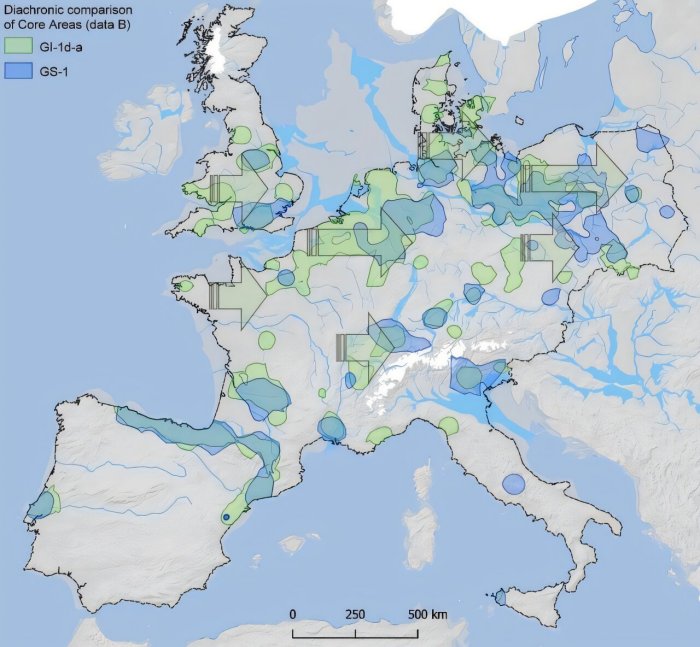How Did Prehistoric Hunter-Gatherers Cope With Climate Changes 12,000 Years Ago?
Jan Bartek – AncientPages.com – A recent study has provided valuable insights into how prehistoric hunter-gatherer populations in Europe adapted to climate changes over 12,000 years ago.
An artist’s impression of ice age Earth at Pleistocene glacial maximum. Credit: Ittiz – CC BY-SA 3.0
Conducted by scientists from the University of Cologne, along with 25 prehistoric archaeologists from twenty European universities and research institutions, the research highlights significant changes in population size and density during key periods at the end of the last Ice Age.
Specifically, during the Final Paleolithic period between 14,000 and 11,600 years ago, there was an initial establishment of a larger human population in north-eastern central Europe. This was followed by a notable decline during Greenland Stadial 1, a cold phase that halved Europe’s total population.
Interestingly, some regions in central Europe exhibited stability or even slight increases in population size despite this general trend. The researchers interpret these findings as evidence of human migration eastward as a response to deteriorating climate conditions.
The team compiled an extensive database on archaeological sites from this era and employed an advanced geostatistical method known as the Cologne Protocol to estimate prehistoric human population sizes and densities across various European regions.
This protocol offers a standardized approach for estimating demographic data from prehistory, facilitating diachronic comparisons. The observed regional shifts provide a new understanding of how early humans navigated environmental challenges.
The study examines two significant periods: Greenland Interstadial 1d-a (GI-1d-a) and Greenland Stadial 1 (GS-1). During GI-1d-a, a warmer phase of the Final Paleolithic, humans expanded into northern and north-eastern central Europe, marking this region as a focal point for demographic changes in Europe for the first time in prehistory. In contrast, populations in south-western Europe, particularly Spain and France, experienced a decline compared to earlier Upper Paleolithic estimates.
As the climate cooled significantly during GS-1—known as the “Younger Dryas” in the northern hemisphere—the overall population of Europe was halved. However, regional dynamics varied notably. The study reveals increased population density in certain areas such as northern Italy, Poland, and north-eastern Germany. Additionally, there was a general eastward shift of populated regions across Europe.
The map shows population shifts from south-western to north-eastern Europe during the last cold phase of the Ice Age. Credit: PLOS ONE (2025). DOI: 10.1371/journal.pone.0310942
“These observations probably reflect the eastward movement of people in response to the very abrupt and pronounced climatic cooling during the Younger Dryas,” explains Dr. Isabell Schmidt from the University of Cologne’s Department of Prehistoric Archaeology. “Humans during the Final Paleolithic apparently responded by migrating to more favorable areas.”
The Cologne researchers are familiar with extreme population declines in prehistory, such as during the late Gravettian (29,000 to 25,000 years ago), when cooler temperatures reduced populations in western and central Europe by up to two-thirds, leading to the extinction of regional populations.
See also: More Archaeology News
Demographic dynamics during the early phases of human prehistory remain largely unclear. However, a recent study contributes valuable insights into how prehistoric humans adapted to climate change. This research was conducted at the University of Cologne as part of the Collaborative Research Center 806—Our Way to Europe, adding to an expanding collection of evidence in this field.
The study was published in PLOS ONE
Written by Jan Bartek – MessageToEagle.com – AncientPages.com Staff Writer












